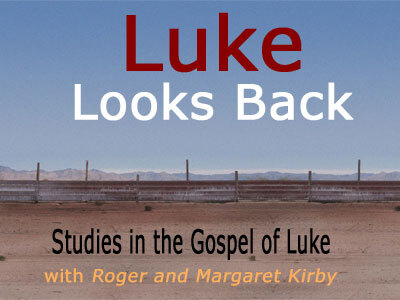
G’day and welcome to Partakers Christian Podcasts! Join us for uplifting Bible teaching, inspiring readings, heartfelt worship, powerful prayers, and fascinating church history. Whether you’re new to faith or growing deeper in your journey, we’re here to encourage and equip you. 🎧 Tune in, interact, and be inspired—wherever you are in the world.
Episodes

Saturday Jun 14, 2025
Bible Thought - Luke Looks Back Part 14
Saturday Jun 14, 2025
Saturday Jun 14, 2025

Study 14 - Luke 10:25-42
Loving God and Neighbour
The parable of the Good Samaritan is usually considered by itself. It should not be! It is part of a pair with the story of Mary and Martha. The two go together because in the original Greek the stories are about 'a certain lawyer' (v 25) and 'a certain woman' (v 38).
The two sayings of Jesus that conclude the stories are: in 37b 'Go and do likewise' and in 42b 'Mary has chosen what is better'.
Question 1. Which saying is the more important in popular thinking and preaching? Which does the words Jesus used suggest is the more important?
There is a great deal more interest in the story of the good Samaritan because of its simple brilliance as a story and the way it can be taken as an example by anybody, Christian or not. Everybody recognizes that they should help other people; not everybody is prepared to listen to Jesus as Mary did. Yet the words that Jesus used strongly suggest that the latter is the more important.
Before we read the verses let's think about the structure a bit. The famous parable is set within two short dialogues, the first in 25 - 28 and the second in 29, 36 and 37. Both dialogues have the same, quite natural, formats: 1) a question from the lawyer; 2) a challenging question in reply from Jesus; 2') an answer to Jesus from the lawyer; 1') an answer to the lawyer from Jesus. The well-known parable is inserted before the question of Jesus in the second dialogue.
We read the first dialogue: Luke 10:25 - 28.
Did you get the pattern?
And the second dialogue: Luke 10:29, the story, 36, 37.
What a wonderful teacher Jesus was! Wouldn't it be good if all teachers were as good as he was at getting people to answer their own questions!
Question 2. In the first dialogue the answer of Jesus in v 28 does not exactly answer the lawyer's question in v 25. What significance can you see in the discrepancy? What does this tell us about the nature of eternal life?
The lawyer asked about eternal life. Jesus answered about life, a good life maybe but still only about life. What the Gospel's call 'eternal life' Jesus says starts in the here and now with a good life lived in this present world. That good life is a life of following him.
It is time to read the famous parable. Luke 10:30 - 35 and the conclusions Jesus draws in 36, 37.
Some things usually missed:
a) The lawyer's question in the first dialogue (v 25) is deeply flawed: one can do nothing to inherit.
b) The parable does not answer the lawyer's question in the second dialogue (v 29) but a slightly different one: 'Which of these three became a neighbour'.
c) The priest would have been rich, therefore on horseback contrasting the Samaritan's donkey.
d) The Samaritan would have risked his life taking a wounded Jew into a Jewish town, where the inn would necessarily have been. The men in the street might well have thought he was responsible for wounding the man and started to attack him before finding out what really happened.
Question 3. Who is the Samaritan portraying? How does this relate to the point about the danger to the Samaritan going into a Jewish town?
Jesus is the Good Samaritan. All others aiming to copy the story are simply following his example. This is another point about the story often missed. In coming into this world Jesus fully accepted all the danger that was to him. He died on the Cross to rescue those who are wounded: physically, spiritually, morally.
Moving on to the second story: to put this story of Mary and Martha in context: the Jewish Rabbis said 'let thy house be a meeting place for the Sages and sit amidst the dust of their feet and drink in their words with thirst ... but talk not much with womankind.'
We read Luke 10:38 - 42.
In that culture a teacher sat to teach and a student, necessarily male, stood to recite and sat to learn.
Question 4. How does Luke indicate that things were not as they would have expected them to be?
Mary was sitting and listening. We can only imagine what the reaction of the men who wanted to be around Jesus might have been. Horror, shock, disgust, amusement - perhaps just a few of them would praise her for what she did.
We are dominantly either doers or hearers: the Samaritan or Mary. By putting these two stories together Luke, and Jesus, are presumably saying that we ought to be both.
Question 5. How can the doers learn to listen better? How can the hearers learn to be more practically active?
These things are a matter of intent and will. Doers can always say 'I'm too busy' and hearers can say 'Ill do it tomorrow when I have finished listening'. Only if we are prepared to listen to what the Word of God is saying to us will we be all that we should be.
Question 6. How does verse 42a provide a complete answer to the lawyer's original question in verse 25?
If we truly follow Jesus all the rest will fall into place. We are never told whether the lawyer did set out to follow Jesus. We know that Jesus told him what he needed to do. Some of us need the same advice: 'go and do likewise'. Some of us need to copy the example of Mary more closely.

No comments yet. Be the first to say something!